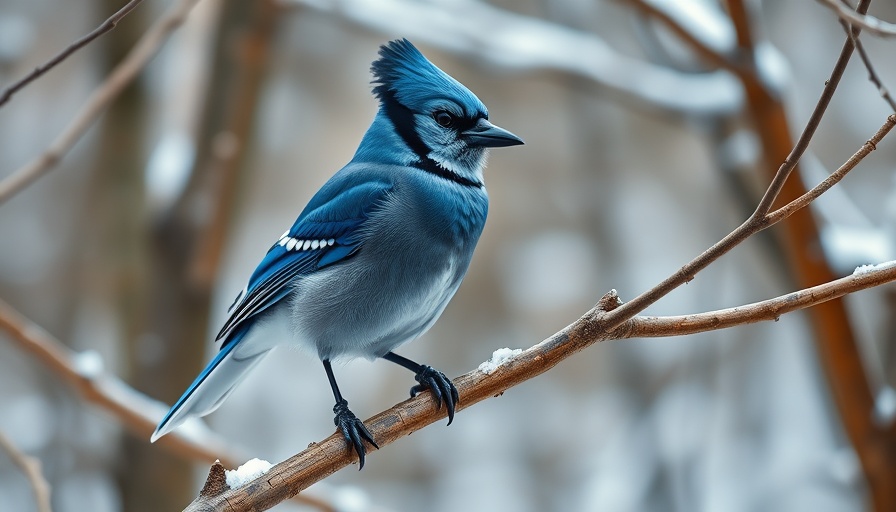
Understanding Bird Communication Through Crest Movements
The fascinating way birds utilize their crests can tell us much about their behaviors and emotions. A bird's crest, a collection of unique feathers atop their head, serves as a key tool in their communication toolkit. For instance, when Blue Jays are relaxed—perhaps nesting or feeding their young—their crests are low and sleek. But in moments of excitement, whether in courtship or during a confrontation, these birds elevate their crests dramatically, signaling heightened alertness and readiness.
The Significance of Crest in Bird Evolution
Why do some bird species develop such prominent crests while others don’t? The evolution of bird crests is still a subject of study, rooted deep in their ancestry. Theories suggest these traits might have developed as a response to environmental pressures or for mating displays, showcasing the intricate relationships among birds, their habitats, and their evolutionary paths.
Other Birds and Their Crest Behaviors
It’s not just jays that communicate with crest movements. Northern Cardinals also use their crest feathers to express emotions or intentions. Even birds without traditional crests, like sparrows and crows, exhibit similar behaviors by puffing up their crown feathers. This shows a universal strategy among birds to convey messages through body language, enhancing their social interactions and survival tactics.
What Bird Crest Communication Means for Observers
For bird enthusiasts and casual observers alike, understanding the messages conveyed by bird crests can enrich the birdwatching experience. Observing how a bird raises or lowers its crest can indicate its mood, social situation, or even reproductive status. This knowledge not only deepens appreciation for these avian creatures but can also inform conservation efforts by highlighting the importance of healthy habitats that support these complex behaviors.
While the intricate dance of feathers might seem like a simple display, it reveals a deeper narrative of survival, communication, and adaptability in the avian world. Birdwatchers and researchers alike can benefit from paying closer attention to these signals in the wild.
 Add Row
Add Row  Add
Add 




Write A Comment